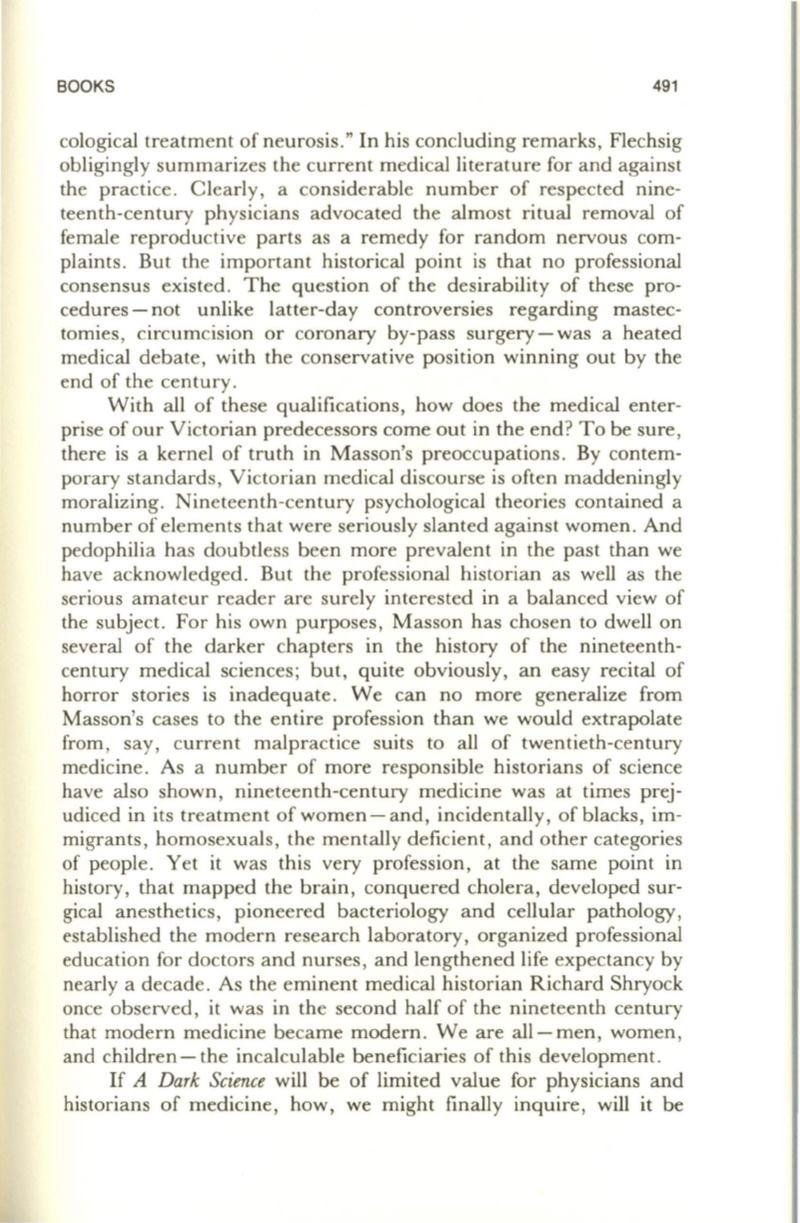
BOOKS
491
cological treatment of neurosis."
In
his concluding remarks, Flechsig
obligingly summarizes the current medical literature for and against
the practice. Clearly , a considerable number of respected nine–
teenth-century physicians advocated the almost ritual removal of
female reproductive parts as a remedy for random nervous com–
plaints . But the important historical point is that no professional
consensus existed. The question of the desirability of these pro–
cedures - not unlike latter-day controversies regarding mastec–
tomies, circumcision or coronary by-pass surgery-was a heated
medical debate, with the conservative position winning out by the
end of the century.
With all of these qualifications, how does the medical enter–
prise of our Victorian predecessors come out in the end? To be sure,
there is a kernel of truth in Masson's preoccupations. By contem–
porary standards, Victorian medical discourse is often maddeningly
moralizing. Nineteenth-century psychological theories contained a
number of elements that were seriously slanted against women. And
pedophilia has doubtless been more prevalent in the past than we
have acknowledged . But the professional historian as well as the
serious amateur reader are surely interested in a balanced view of
the subject. For his own purposes, Masson has chosen to dwell on
several of the darker chapters in the history of the nineteenth–
century medical sciences; but, quite obviously, an easy recital of
horror stories is inadequate. We can no more generalize from
Masson's cases to the entire profession than we would extrapolate
from, say, current malpractice suits to all of twentieth-century
medicine . As a number of more responsible historians of science
have also shown, nineteenth-century medicine was at times prej–
udiced in its treatment of women - and, incidentally, of blacks, im–
migrants, homosexuals, the mentally deficient, and other categories
of people. Yet it was this very profession, at the same point in
history, that mapped the brain, conquered cholera, developed sur–
gical anesthetics, pioneered bacteriology and cellular pathology,
established the modern research laboratory, organized professional
education for doctors and nurses, and lengthened life expectancy by
nearly a decade. As the eminent medical historian Richard Shryock
once observed, it was in the second half of the nineteenth century
that modern medicine became modern . We are all- men, women,
and children - the incalculable beneficiaries of this development.
If
A Dark Science
will be of limited value for physicians and
historians of medicine, how, we might finally inquire, will it be


